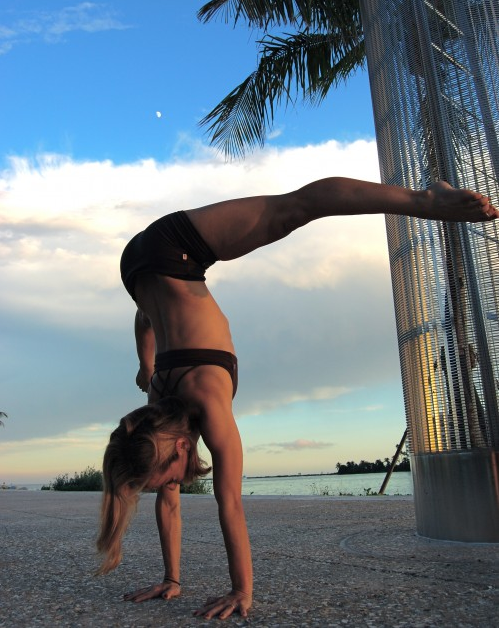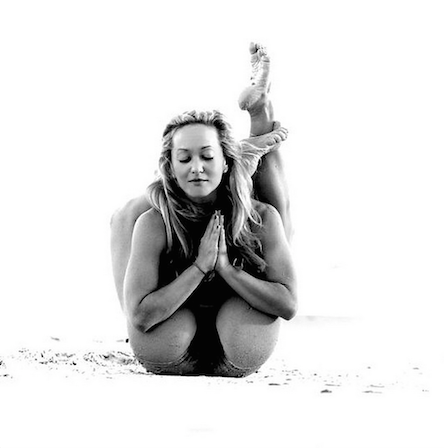Many women assume that they will never succeed in strength simply because they are female.
The phrase “you throw like a girl” could easily be rewritten to say, “you lift up like a girl.”
But what happens when the girls don’t throw like girls or lift up like girls anymore? What happens when girls actually exceed not just the standards for their gender but the standards for any person regardless of gender?
If the notion of the female body is changing, it is because we are all learning to be in our bodies differently.
By changing the way we occupy the space of our bodies, we change the way we occupy the personal, social and political landscape around us.
The female pitching phenomenon, Mo’ne Davis, the 13-year-old pitcher for the Taney Dragons from Pennsylvania, who has been the sensation of the Little League World Series, presents an interesting parallel to many women’s journey in the world of yoga.
With her 70-mile-per-hour fastball and her extraordinary physical prowess highlighted on the cover of Sports Illustrated, she is a top notch athlete by any standard. Yet it’s her female gender that brought attention to her—just as many strong women have attention pointed to them based on their gender.
If a woman can press up into handstand, it’s somehow more impressive because of her female gender. The opposite side of that is that if a man in yoga can do deep backbends it’s somehow more impressive because of his gender. Yoga challenges our limited notions of self and it is no surprise that gender identity, perhaps one of the most limiting things we take from social conditioning, is being challenging by changing the way we live in our bodies through yoga.
In the New York Times, Eric Anthamatten cites feminist philosopher Marion Young’s deconstruction of the notion of subjectivity contained within the act of throwing, in an an essay titled “Throw like a Girl.” He says that Young presents the idea that throwing itself is contrary to stereotypical notions of female identity. Interestingly, in relation to yogis there is the idea that the “girlie throw” stems from a deeper physical pattern that restricts movement to the localized portions of the body and rarely uses the entire form.
Anthamatten states that this restriction is often unrelated to actual strength. It instead has to do with “the utilization of the entire body for the task, something that is not rooted in anatomical or biological ‘limitations,’ but the whole social, political and aesthetic history of how females come to learn to ‘be’ their bodies in space and time.”
Well, yoga seeks to change exactly that paradigm of subjectivity, namely the way that we “be” in our bodies in space and time.
What is interesting to note here is the relationship between the way that we inhabit our bodies, our socio-political context and the restriction or freedom experienced in physical movement potential. If the socio-political context that a women exists within influences her notion of subjectivity to the extent that her subconscious body patterning utilizes only a limited potential of her true physical power, then the way to change a woman’s sense of herself may be through changing how she inhabits her body.
Yoga is more than an exercise, it is a body awareness technique that aims to teach the practitioners how to inhabit the entire body with powerful consciousness. In order to master the postures, yoga demands that practitioners utilize their entire bodies and actually change how they inhabit their physical bodies. This change of perspective creates a paradigm shift by changing the way that the body is utilized for the task of the asana.
It is not only women who are experiencing a transformation—regardless of their gender affiliation, everyone who practices yoga is experiencing themselves differently through the expanded sense of self presented through daily yoga practice.
Ground zero of the gender war is the body itself.
Whatever your gender identity, the basic utilization of the body for the task at hand stems not just from strength, but also from socio-political conditioning. If the traditional male stereotype is conditioned to utilize the whole body for physical tasks, what sensitivity is suppressed along the way? If the traditional female stereotype is conditioned to utilize only a portion of the body for physical tasks, what strength is suppressed along the way?
Asana is an inner revolution—or perhaps, an inner evolution—that seeks to take practitioners beyond the limited confines of stereotypes. It’s entirely too reductionistic to say that guys are naturally stronger and that women are naturally more flexible. Whether you’re LGBTQIA, heterosexual male/female or something totally new, there are people who are naturally stronger and others who are naturally more flexible.
Yoga will show you places of weakness and strength and then challenge you surpass those limits by accessing the limitless place within yourself.
Perhaps it is a neutralization, or even eradication, of gender stereotypes of any kind that will be a true step forward toward the freedom that is yoga’s highest aim.
Love elephant and want to go steady?
Sign up for our (curated) daily and weekly newsletters!
Editor: Emily Bartran
Photos: Author’s Own














Read 3 comments and reply